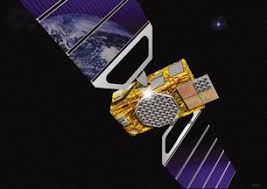
GPS III, Lockheed Martin image
WASHINGTON: The Transportation Department (DoT) has begun organizing field demos of technologies to provide back-up in case the Air Force’s Global Positioning System (GPS) goes dark, says DoT’s General Counsel Steven Bradbury.
Speaking to the National Space Council at its sixth meeting, Bradbury explained that under Security Policy Directive 39 (issued in 2004), DoT is in charge of all civil GPS uses. It is also co-chair of the National Space-Based Positioning, Navigation and Timing Executive Committee (PNT ExCom) with the Defense Department.
“Through this PNT ExCom,” Bradbury explained last week, “we’re working closely with DHS [Department of Homeland Security] and other federal departments and agencies to address policy and technical issues including the security and resilience of GPS receivers.”
“In light of the critical importance of GPS, DoT has asked for for submissions from technology vendors interested in providing GPS backup technologies, and we’re now organizing field demonstrations of those technologies,” he added.
DoD for years has been worried about the rapid spread and increasing capability, of jamming systems — particularly those of Russia and China. Indeed, Russia has used jamming technologies in conflicts in its neighborhood, and stands accused by several Nordic nations of using jamming to disrupt a NATO exercise in Norway in 2018. The Air Force is working on a number of initiatives to figure out how to better protect GPS and to make it more resilient in the event of an attack on the space-based system.
The Trump Administration’s fiscal year 2020 budget request for DoT included $105 million to “support designated civil elements of the Air Force GPS program” as well as “civil GPS augmentations and related activities.” GPS is used around the world for everything from enabling banking transactions to Google Maps for lost tourists, as well as by US and allied militaries for myriad missions from helping Army tanks navigate in the Iraqi desert to guiding cruise missiles to their targets.
DoT issued its request for proposals (RFP) to interested vendors in May, seeking tech-demo ready capabilities “that are capable of providing backup positioning, navigation, and/or timing services to critical infrastructure (CI) in the event of a temporary disruption to GPS.” The RFP added that the demo “also is expected to encompass technologies capable of providing complementary PNT functions to GPS by either expanding PNT capabilities, including cross checks, or extending them to GPS or Global Navigation Satellite System (GNSS)-denied or degraded user environments.”
The RFP spurred 21 responses by the June deadline, according to a June DoT briefing to the independent National Space-Based Positioning, Navigation and Timing Advisory Board chaired by retired Adm. Thad Allen. Among the respondents were GlobalStar mobile satellite voice/data service provider partnered with EchoStar, a small Virginia company specializing in radio-frequency related products and software.The team’s offering is a satellite-based application (using non-GPS satellite signals), but the RFP does not rule out airborne or ground-based systems.

Galileo satellite, European Space Agency photo
DoT, Bradbury said, is also supporting DoD’s efforts to protect GPS by contributing $15 million to the Air Force’s “real-time monitoring” of GPS’s civil signals to ensure they are working properly. GPS civil users tap into a set certain set of microwave signals call L-Codes, while DoD uses the encrypted M-Code military signal. The latest version of GPS, GPS III, includes a new L1C signal designed to be interoperable with similar international satellite networks, such as Europe’s Galileo and Japan’s Quazi-Zenith Satellite System (QZSS).
United Launch Alliance (ULA) last Thursday successfully launched the Air Force’s second GPS III satellite on a Delta IV rocket, after a month-long delay due to ULA troubles with a parts subcontractor. Lockheed Martin was contracted in 2008 to build the first 10 GPS III satellites, the first of which launched last December — more than four years late.
The Air Force in September 2018 contracted Lockheed Martin to build 22 more GPS birds, called GPS III Follow-On satellites, under a $7.2 billion contract. The GPS III Follow-On satellites are being designed to provide even greater accuracy and improved anti-jam capabilities, with the first satellite planned for launch in 2026.
DoD’s 2020 budget asked for at total of $1.76 billion for various GPS efforts.
From F-16s to NATO, Argentina’s moves tilt West, but ties to China to last
There are flashpoints to watch as Argentina navigates its future between the polar attractions of Washington and Beijing, including future defense deals and a deep space facility.


























